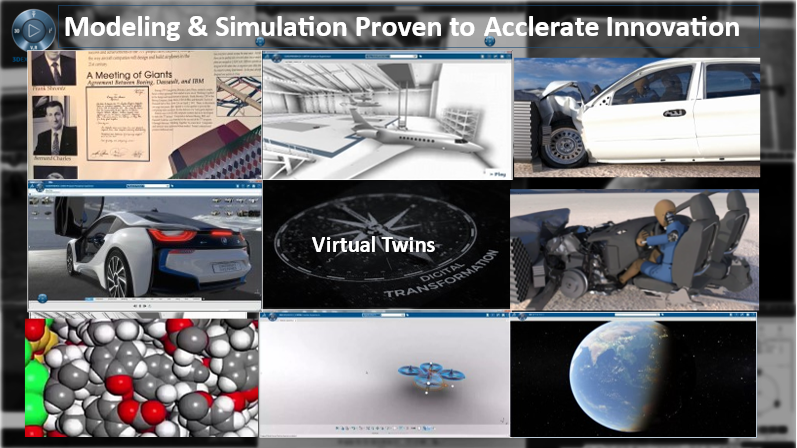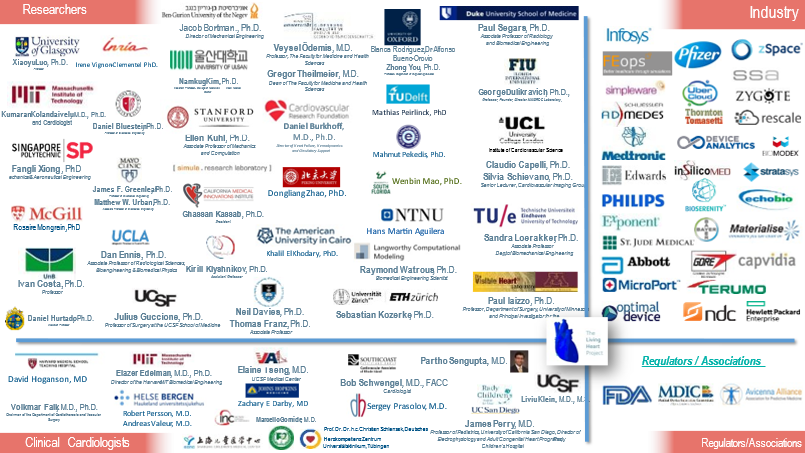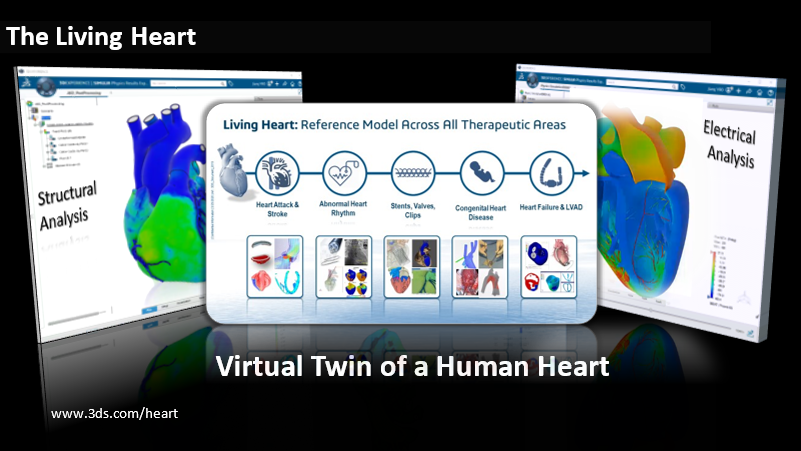High-Performance Computing for the Living Heart Project
Steven Levine, Dassault Systèmes , Founder and Executive Director of the Living Heart Project
Wolfgang Gentzsch, President and Co-founder of UberCloud
In an era where healthcare is being revolutionized by technology, the synergy between high-performance computing (HPC) and medicine is paving the way for unprecedented advancements. This Blog highlights the possibilities and potentials that lie at the intersection of cloud computing and cardiac care, envisioning a future where digital health drives medical innovation, improves patient outcomes, and shapes the next frontier of healthcare.
Modeling and Simulation started first on Supercomputers
In the early days of high-performance computing, modeling and simulation research started on supercomputers like the Cray-1 (1974) and the Fujitsu VP-100 (1980). These systems helped to accelerate computational sciences by a factor of 100, enabling scientists and large industries to move from 2D to 3D, from Euler equations to Navier Stokes, from laminar to turbulent, from 100K finite elements to one million, and to one billion and more today, and so on.

But in the mid-1990s, with the advent of distributed computing on smaller systems, powerful workstations and servers, interconnected by faster networks, and the parallelization of application codes then running in parallel on more, faster, and networked compute nodes, traditional tightly coupled, monolithic supercomputers have been replaced by Beowulf-type multi-node compute clusters and parallel applications orchestrated by intelligent workload management software, and following the Moore’s Law performance trajectory for the next 20 years.
The Living Heart Project and its journey to the Living Heart Virtual Twin
Some applications, for example Computer Aided Engineering in automotive and aerospace, made great progress during that time, while others, like Bio-Medical simulations, followed slowly, for example modeling the human heart. We wondered if this situation was due to technology limitations, or maybe we just didn’t understand the human heart well enough, or simply it might be a cultural result of the history of the field.
Looking at the massive amount of research and clinical data collected daily on the human heart, it is fragmented and spread out all over the world so each group can become an expert in their domain. We asked the question, what if these experts actually combined their knowledge? Did we collectively know enough to fully replicate the function of a human heart? And that was the birth of the Living Heart Project.

The Living Heart Project Community applied modeling and simulation to better understand the heart as a multi-scale, multi-physics problem, which finally lead to the Living Heart Virtual Twin. A high fidelity model, in fact two models, one representing the detailed electrical system and the other tightly coupled to model the structural response to the electrical stimulus; and of course, the physical response: the heart beat will drive blood flow, completely replicating the heart’s function. With this modularity you can introduce structural heart diseases or electrical abnormalities such as heart block or arrhythmias, study the effect on blood flow and design devices to virtually cure the disease etc.

A look to the Future…
With the Living Heart Virtual Twin model, we have the ability to include hi-fidelity organs such as the heart or the lungs, these “system-of-systems” models will allow real world test conditions to be captured and use to create virtual twins that mirror patient behavior as well as anatomy.
In the near future, we will enter the most exciting stage of this journey – moving from the representation of THINGS to LIFE. Imagine being able to model, test and cure a human body as we do with a plane or a car. We call it the “virtual twin experience of humans.”
The Living Heart Project and High-Performance Computing in the Cloud
Today, members of the Living Heart Project, from Biomedical researchers to practicing Clinicians, harness the power of UberCloud to simulate the human heart to generate medical answers at unprecedented speeds. Virtualizing the patient experience provides unprecedented potential to develop new medical innovations and transform patient care.
Since the early days of the Living Heart Project, at around 2017, when the Living Heart Model has reached its first maturity level, UberCloud has been approached to support the community with more computing and data resources, with its automated and self-service Engineering Simulation Platform. LHP members like Stanford University (Prof. Ellen Kuhl and Team), Admedes (Dr. Philipp Hempel), Enmodes (Dr. -Ing. Deepanshu Sodhani), the National Institute of Mental Health in Bangalore (Dr. G. Venkatasubramanian and Team), and 3DT Holdings (Yaghoub Dabiri, Ph.D. and Team), approached UberCloud and performed exciting LHP projects that won several prestigious international awards. We will present these five projects in the 2nd part of this blog series.
Briefly about UberCloud: UberCloud enable engineers to access, use, and benefit from enormous computing capacity in the simplest way possible in the cloud. Unlike traditional corporate-owned computing silos and their high capital and operating costs, UberCloud helps companies in Manufacturing, Life Sciences, Energy, Finance, etc., to seamlessly integrate HPC into their ‘cloud-first’ strategy, with UberCloud’s fully automated, self-service, multi-cloud Engineering Simulation Platform and HPC containers for Multi-Physics, Big Data Analytics, Digital Twins, Machine Learning, and other complex applications. This will enable engineers to work on their complex simulation workflows from anywhere in a familiar way.
You want to know more? Watch online our eye-opening webinar that explores the cutting-edge integration of UberCloud's HPC Platform with the Living Heart Project's virtual twin model of the heart:



